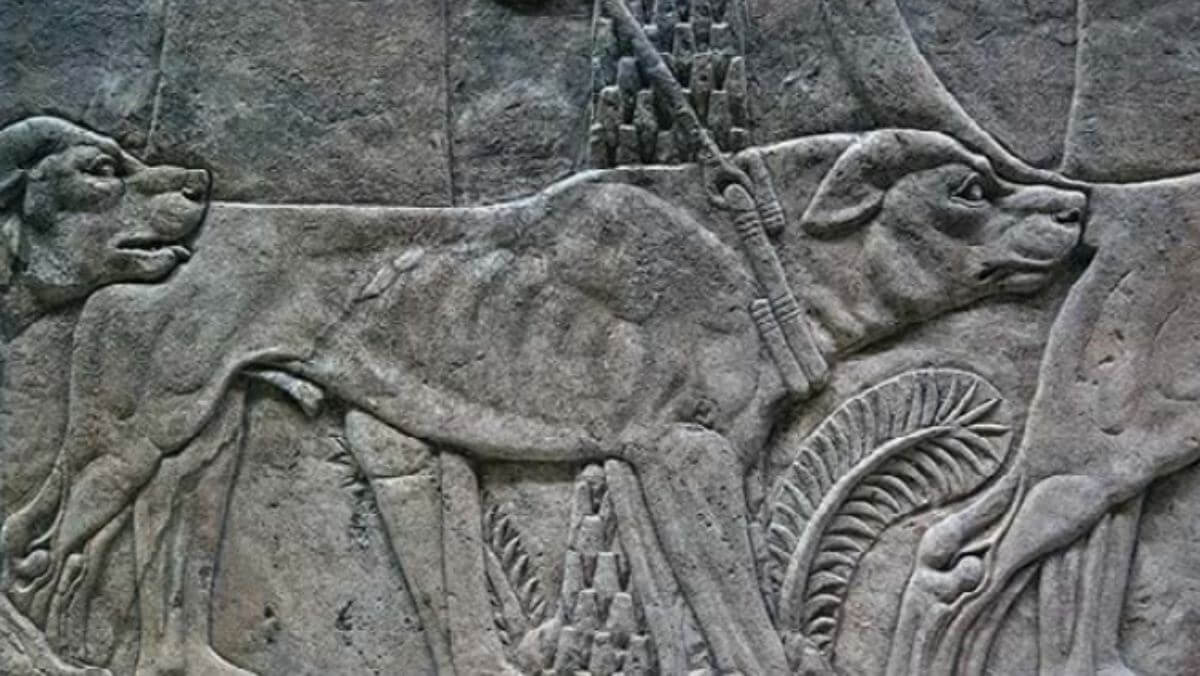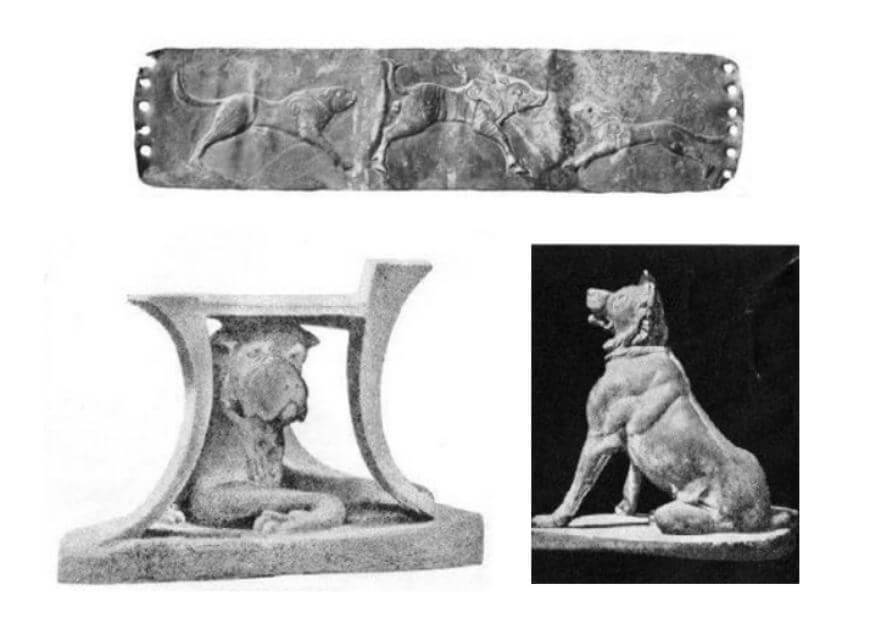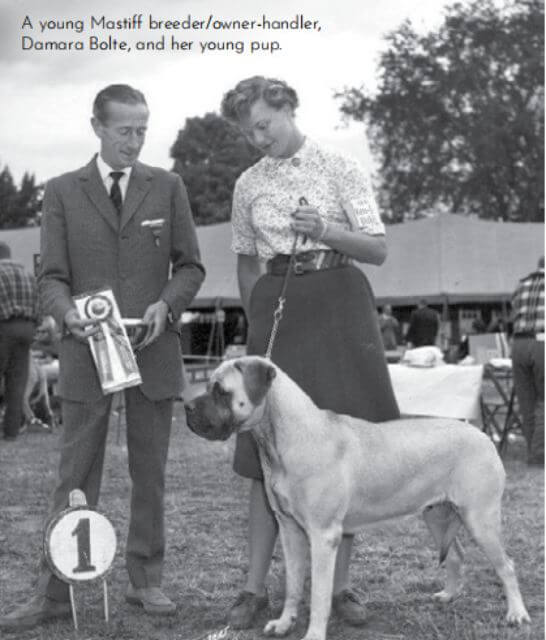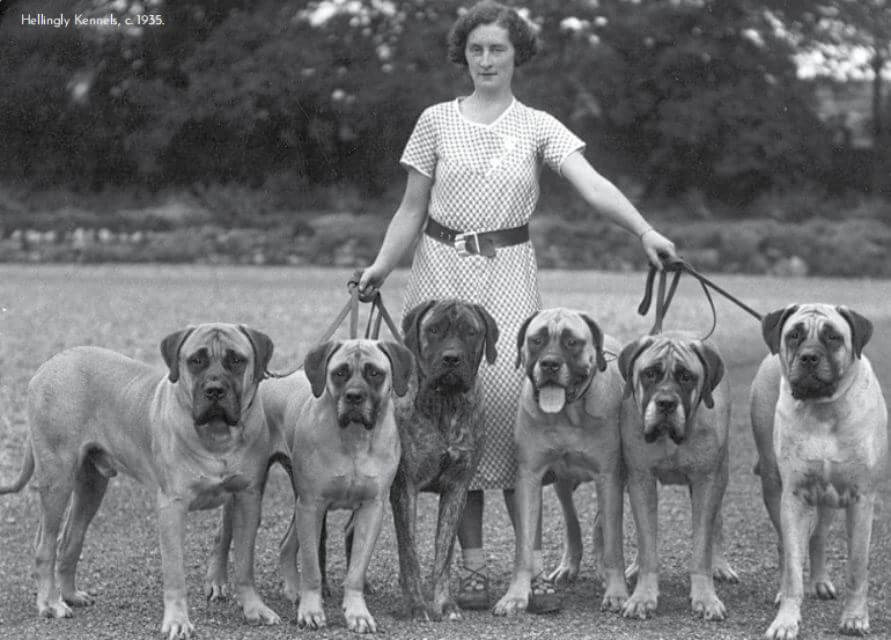


Home » History of the English Mastiff

This article was originally published in Showsight Magazine, June 2020 issue.
The breed now called the Mastiff in English-speaking countries is more commonly known as the Old English Mastiff. It is a giant, shorthaired dog with a heavy head and short muzzle that has been bred in England for over two thousand years as a watchdog. The term “mastiff” describes a group of giant varieties of dogs rather than a single breed.
Mastiffs were first depicted in history between 645–635 B.C. on the world-famous bas relief found on the palace walls of Nineveh, a city along the Tigris River. It shows Assyrian hunters on a lion hunt accompanied by their Mastiffs.

The Mastiff has a longer history than most breeds. Caesar described them in his account of invading Britain in 55 B.C., when they fought alongside their masters against Roman legions with such courage and power that they made a lasting impression.
Soon afterward, there are several accounts of the huge British fighting dogs brought back to Rome, where they defeated all other varieties in combat at the Circus.

During Anglo-Saxon times, one Mastiff had to be kept for every two villains. In this way, wolves and other savage game were kept under control. The nobility also used them in hunting packs.
However, it was as protectors of the home that Mastiffs were most often used. This long history of service is likely what has given the Mastiff its unique traits as a family dog.
Anecdotes extolling the power and agility of Mastiffs, as well as their devotion to their masters, would fill a large volume of marvels. The story of St. Peers Legh, Knight of Lyme Hall at the Battle of Agincourt, is well known. He brought his favorite Mastiff, a bitch, to France, and when he fell, she stood over him, defending him for many hours until he was picked up by English soldiers and carried to Paris, where he died of his wounds.
The faithful Mastiff was returned to England, and from her descended the famous Lyme Hall strain, which the family has bred for five centuries.

The present-day English Mastiff is based on the strains of Lyme Hall and the Duke of Devonshire’s Kennels at Chatsworth. The first documented Mastiff in what is now known as the United States was “Grace,” who arrived in Plymouth, Massachusetts, aboard the Mayflower in the fall of 1620.
The first indications of the continuation of the Mastiff in the United States after 1620 were in the late 1800s, with the first AKC registration in 1885. In 1889, there were 373 registered Mastiffs; by 2018, there were 4,045. Today’s Mastiff in America is a gentle giant, bred for its even temperament and love of family.